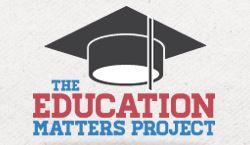Archive for December, 2013
The problem with the edge
 I recently wrote  a post about the finding the edge. How finding it is one of the most important things you can do. That’s because it’s at the edges where you grow, and where change really happens. But the problem with the edge is that a lot of people never find it.
I recently wrote  a post about the finding the edge. How finding it is one of the most important things you can do. That’s because it’s at the edges where you grow, and where change really happens. But the problem with the edge is that a lot of people never find it.
The first problem with the edge is that most people are afraid of it. Afraid to be too edgy, or afraid they might go too far. That they might be ridiculed or worse yet, that they might fall and feel too much pain. But the good news is you can always get up and try again. So the challenge is to go anywys. To take emotional risks, reach out to people who may say no and to try things that might not work but if it did work could change everything. Because that’s where the big reward is.
Another problem is that edges are different for everyone. This means there’s no rulebook or step-by-step guide, you just have to do it. Feel your way through. Figure out the hard part of whatever is you’re working on and do that first.
The last problem is that the edges change over time. Like your favorite Chicago Bears sweater you used to wear all the time but that got stretched out and now is way too big.   Or ideas that seemed creative three years ago, like crowdfunding and Instagram, but now are more common than ever. Like those examples, your edge changes over time and gets redefined, so you have to keep pushing.
Edges are scary and sometimes might feel impossible to find. But that doesn’t mean you shouldn’t look for them. Because in the end, the edges are where real change happens.
So have you started looking yet? What are you waiting for?
Revive the Dream: Session 3 with Adam Anderson of Chicago Public Schools
 Just yesterday, we hosted the third session for the Revive the Dream Fellows Program. Our Fellows were lucky to spend the evening with Adam Anderson.  During the session, the Fellows discussed Chicago Public Schools (CPS), the school closings in early 2013 and Adam’s role as Officer of Portfolio, Panning and Strategy.
Just yesterday, we hosted the third session for the Revive the Dream Fellows Program. Our Fellows were lucky to spend the evening with Adam Anderson.  During the session, the Fellows discussed Chicago Public Schools (CPS), the school closings in early 2013 and Adam’s role as Officer of Portfolio, Panning and Strategy.
The discussion about CPS is always a good one no matter what side of the fence you sit on. The decreasing (yet still very large) budget, the organization’s most important priorities, increases in class size and student social-economic backgrounds are some of the most compelling topics.
Some people think CPS is getting it all wrong. They point to increasing class sizes, decreasing budgets, abismal test scores, and shutting down a few dozen schools last year. On the other hand, some people are more optimistic, understanding the challenges that come with running any school, and especially a pubic school in Chicago. They realize that the class sizes and teacher salaries are the result of budget cuts, balance sheet deficits and not enough talented people entering the education space. They also understand the hard work that it takes to move the needle just a little and the difficulty the students face not just in the classroom, but at home far before they ever step foot in the classroom.
We talked about this and more in our session last night with Adam.
As pre-reading for the session, I assgined the Fellows a popular trending article, The Invisible Child has been trending lately (I highly recommend reading this article). This was a perfect pre-read to get your mindset on some of the realities faced in urban districts. I kicked off the session by doing some simple discussion of the article and student life in rural districts in the United States. We talked about the harsh realities of homelessness and the struggles that some kids face before stepping foot in the classroom, and we also brainstormed ideas to solve the problems.
Easier said than done of course. And that’s why programs like Revive the Dream exist. To bring more people together to understand that Education Matters for students in urban districts and to help equip them solve these education issues.
Thanks to Adam for coming to speak to our Fellows. We look forward to staying in touch.
Are you eating the marshmallow?
 There was a famous study done at Stanford University over 30 years ago. In the study, children were left alone in a room with a marshmallow. They were told that if they didn’t eat it, they would be given another one in fifteen minutes. What do you think you would have done if you were left in the room at age 5?
There was a famous study done at Stanford University over 30 years ago. In the study, children were left alone in a room with a marshmallow. They were told that if they didn’t eat it, they would be given another one in fifteen minutes. What do you think you would have done if you were left in the room at age 5?
If you watch the video (below), the reactions of the kids are pretty entertaining. Some kids wait while other kids eat the marshmallow. Meanwhile, some kids played with the marshmallow and licked it, and one kid pulled out the inside to eat and then put the rest of the marshmallow back together.
The study traced these kids for 30 years after the study was done, and here is what they found. The kids who didn’t eat it were found to significantly more successful than the group who ate the marshmallow.  They had higher SAT scores, got into more famous colleges, and had better marriages. The results were statistically significant.
One thing the study would like you to take away is that it is useful to delay gratification for 15 minutes.  Something that successful people have to come to grips with early.
Think about it.
Like taking a really hard class in college in order to take better electives and get better majors later.  Learning how to study contract law or Torts inside on a beautiful day because 1L grades in law school are really important. Taking more interesting yet lowering paying jobs early in your career or becoming an entrepreneur earlier in your career understanding what it will lead to more opportunities 5 to 10 years later.  Or even taking two years out to go to business school even though it’s costing you two years of salary in the short term. Because in the end you’ll be much better off.
The part that interests me here is that people from lower socio-economic backgrounds are at a disadvantage during the test.  In part because their journey tends to have a higher percentage of delays of gratification (or no gratification) than their peers growing up. This means kids who don’t ever have as much in front of them may be less likely to pass up on something when they finally have it. And kids who have been let down might have the idea that the person will come back and give them the second marshmallow. Practically speaking maybe they’ve never seen a time when taking less money made sense or when taking two years off to pay to go to school made sense, because they’ve always lived paycheck to paycheck. Or because their lives have always been unstable or filled with “failure”, they can’t rely on future promises from other people. This is why many of these folks opt out of higher loan payments for college and couldn’t imagine turning down a job in corporate American to start a business.
From the study, four ideas quickly come to mind:
- More often than not, it’s best not to eat the marshmallow.
- We have to figure out ways to help those who haven’t had as many marshmallows as kids to still not eat it too quickly.
- Sometimes it might be best to let people keep the marshmallow, even if they don’t eat it – and maybe decide later. This is still delaying gratification.
- On the other hand, in some cases it might be best to eat the marshmallow. What if you don’t want a second one or if you could find a another in under 15 minutes?
What about you? What’s your marshmallow right now, and are you eating it? If so, are you sure you should be?
See below for a video of kids who took part in the study.
Little changes ==> Big differences
 We’ve all heard the theory before, but now more than every it is definitely true. Â Sometimes small changes can make all the difference.
We’ve all heard the theory before, but now more than every it is definitely true. Â Sometimes small changes can make all the difference.
Think about it.
The marketing executive trying to think of ways to make her message more memorable.  There are proven and simple changes in the presentation and structuring of information that can make a big difference in how much her message can spread.
The college basketball player who can’t make a free throw for anything. Just a few more shots a day, more balanced form and a small shift in the way he point his elbows, and suddenly he goes from making 50% to 75%. Â We see this exact same story happen every single year.
The kid in grade school playing hockey for his school team. As we learned from Malcolm Gladwell in Outliers, a few months change in birthdate can make all the difference.  Remember, the children born on January 1 play in the same league as those born on December 31 in the same year. Because children born earlier in the year are bigger and more mature than their younger competitors,  they are often identified as better athletes, get extra coaching and a higher likelihood of being selected for elite hockey leagues. All because of a few months.
And the yoga practitioner who has been working on a headstand.  But once they learn to engage their core, and just push their elbows in one more inch. one day all of a sudden they feel more stronger, more grounded, and can get into a pose easier than ever.
The ideas above are all different but all have one important thing in common. Â That sometimes, we aren’t as far away from success as we think. Â That change is often more closer than we imagine. And if we take a step back, think about it and embrace it, we might just be one small step away from changing everything.
How I just completed 100 straight days of yoga
 Just two weeks ago, I completed 100 days straight of yoga. In addition to meeting a lot of great people at the studios and feeling better than ever physically, I also had the chance to see first-hand how much change can come from doing anything, but especially yoga, for 100 days in a row.
Just two weeks ago, I completed 100 days straight of yoga. In addition to meeting a lot of great people at the studios and feeling better than ever physically, I also had the chance to see first-hand how much change can come from doing anything, but especially yoga, for 100 days in a row.
I remember when I decided to go to my first class like it was yesterday.
It was just after lunch on a Tuesday afternoon in August. I was taking a break outside of my office, and I get a text from my one of my really good friends, Ruby, asking if I wanted to try out her new yoga studio, Core Power Yoga. I had enjoyed doing yoga a few years before, so I said “Sureâ€. Work was busy that week, so I didn’t go that day or the next. But after a few texts and reminders throughout the week, I finally “caved in†and agreed to go to a class Sunday night.
We went to a C2 class, which at the studio is a Power Yoga/Vinyasa class. Â Ironically it turns out, that the class/instructor became one of my favorites months later, and her Sunday evening class is a staple in my routine today.
“What a remarkable class†I thought to myself after the class. I felt more energized and excited about the class than any of my other workouts at the gym.  So I figured I’d make good use of my free week and go every day to maximize the experience. My friend Ruby came as well, and eventually one class turned into one week, which turned into a trial membership, which turned into finishing the 30 Classes in 40 Days Challenge (except I did it in 24 days), which eventually turned into 100 days.
The first reaction people usually have is “WOW!” and “What kind of yoga?†Students, athletes, friends and yoga instructors alike have pretty much had the same reaction and found it pretty cool. Except one of my instructors who immediately told me she did 108 … and here I was hoping to impress her.
100 days was not the initial goal. In fact, I did not start with a goal at all. It was initially just making use of my free week, and then hitting the 30 classes in 24 days so I could have a chance to win a free gift from the studio. But the change I felt, even in the first few weeks led to a lot more than that.
It’s extraordinary to know what change can come from doing anything (but especially yoga) consistently – the progress, patience, connection and persistence – but the change that comes after one hundred days is profound.
Upon reflection, here are a few of the lessons I learned from the experience:
Making Time
At the onset, my first thought was “things are pretty busyâ€, hopefully I can fit a few classes in. After all, I am an M&A lawyer at a large law firm in Chicago. But after a week or two, things changed. I started planning my schedule around going to the studio. I went at 6am on many days as well after 8pm on many days (after getting to work before 7am). In the beginning it was a little bit of a juggling act and I had to make lots of adjustments to make my schedule work. But eventually, it became a habit and was easier, more seamless, and more exciting than on day one.
More than creating a habit, it also helped to build in the ability to schedule things when you’re busy, to prioritize what you care about and find time even when you don’t have time. Studies are very clear that some of the most successful people in the planet (world class CEOs, entrepreneurs and politicians) do that They get up at 5am and find time to do things like exercising before most of the world is awake.
The Process of Progress
When I first decided to practice yoga daily, I knew I’d improve physically, but the physical benefits were far more immense than I first thought. The aha moments really kicked in right around the three weeks in, when I started realizing I could do things that were totally new. Getting better inch by inch. Holidng poses longer. Sliding into poses I never imagined. And conquering the fear that comes from poses that look impossible.  It’s like a coder who finally gets learns HTML, then Java, then coding platforms like JoomLa, and then gets her new URL to go live. Or the applicant who finally gets a few more questions correct, and then a few more, while studying for the GMAT, and after scoring a 620, 650, 670 and 690, finally hits a 740 on the exam. In the end, you keep record of what you’ve achieved and start to appreciate small but important amounts of success.
But more important than any physical progress was the mental benefits that came with the physical ones. The fact that little things didn’t seem to get to me as much. That I had more mental energy and focus throughout the day. That things were more clear and I was more decisive and calm. Seeing the progression of these benefits has been extraordinary.
Persistence
The process of being persistent has also been a really big benefit. Like studying for the GMAT/LSAT, preparing for the bar exam or doing anything new but difficult. These things all take persistence to get through. The ability to push yourself to new levels constantly. And just when you reach the goal you’ve set, you have to do it again on another topic. But mixing in the physical element makes everything even more complex. During the process many things happen: you learn to become OK with where you are, you keep record of your improvements, and start making smaller incremental goals of what you want to achieve. Meanwhile, pretenses about how good you are go away. You learn how to be OK with where you are, even if it’s not where you want to be. Or even if it’s not as good as you were yesterday. You stop comparing yourself to other people around you. And in the end, you become far more aware of where you want to go and what it will take to get there than ever before. These feelings help you to continue persisting not just through a class but also throughout the month and for the entire 100 days.
Finding your edge (See my blog post on this)
In yoga one of the most important parts of practice is finding your edge. That means understanding just how far to go into a pose. Because if you don’t go far enough, then you won’t be challenged, you won’t get the full stretch, and as a result you won’t get the open heart, mind or body that you want. On the other hand if you go too far, that increases not just the pain but also the possibility of injury. And it’s more likely than not that you won’t make it through the full class. Somewhere between these two points is the perfect balance: your “edge.†One of my favorite instructors, Yasemin, talked about this in two classes, and I thought the idea was spot on.
Embracing the Pain (See my blog post on this)
In yoga another important part of practice is the ability to embrace the pain. In yoga, you feel the pain in the class, especially when you’re new or challenge yourself to go further. But by the end you feel more flexible and stronger, and at the end of class, feel like you can do anything. In sports, the same thing is true. Through the pain that comes with training you get better. And if you embrace it, you’ll get faster, jump higher and perform better when the game starts. In life, pain helps you learn to endure failure, learn how to make better choices, and learn how to stand up and fight back the next time around. In the end, yoga, like anything else, takes work to do well. But 100 days later, the work becomes more fun and the benefits are outsized if you can embrace the pain along the way.
Change
More than anything, the last 100 days is about change. Changing how you prioritize your activities. Understanding that you can change your body and your mindset with persistence and focus. Changing what you believe, and understanding that what seems impossible at first doesn’t have to be.
With that said, I’ve decided that I’ll be doing it again in the next few weeks. Maybe 108 days this time to match my instructor.
Anyone interested in joining?









